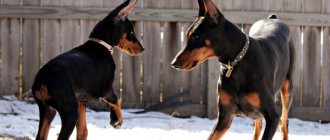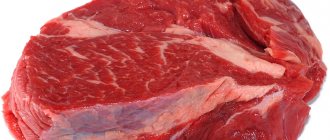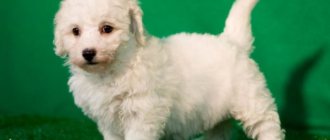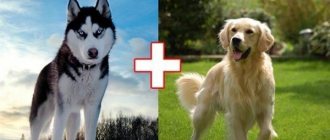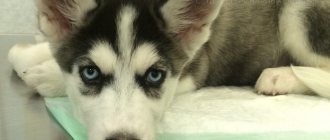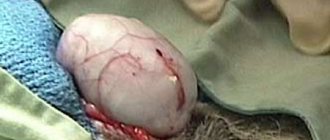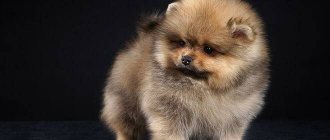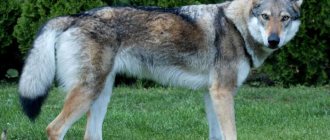Donkeys are a subgenus of equine mammals. Donkeys are distinguished from real horses by a large head with long ears, a thin tail with a brush of long hair at the end and narrow hooves.
Domestic donkeys have become known as unprepossessing, unassuming and very stubborn animals, that is, they have earned a negative assessment from people rather than a good reputation.
But it turns out that much of what we know about these animals is wrong.
- Donkey - general description
- Donkey breeds
- Crossing donkeys
- How is a donkey different from a donkey?
Scientific classification
- Kingdom: Animalia (animals)
- Phylum: Chordata
- Class: Mammalia (mammals)
- Order: Perissodactyla (oddactyls)
- Family: Equidae (equines)
- Genus: Equus (horse)
- Species: Equus asinus (wild ass)
The scientific name of the wild ass comes from two Latin words: "Equus", meaning horse, and "Asinus", meaning donkey, which comes from the archaic word "asnos".
Photo: Crookwell Gazette
Origin
Representatives of the equine family in Africa are known from the end of the Middle Miocene to the present. The forms from which the donkey evolved were first discovered in North Africa and date back to the early Pleistocene. Apparently, by the end of the Pleistocene they already occupied areas of the Mediterranean and Red Sea.
In Asia, wild asses appeared at the end of the Middle or Upper Pleistocene. African asses appeared at the end of the Upper Pleistocene in the Levant and North Africa. Their populations gradually spread westward across North Africa during the Neolithic, displacing the savannah zebra. This process may have been partly related to the domestication of the wild ass.
Benefits for humans
Today, many nationalities are engaged in breeding donkeys.
And this is not done by chance, because these animals bring great benefits:
- In Mexico and central America, this animal is one of the popular modes of transport. Moreover, you should not underestimate the donkey, since in some cases it can be more effective than a car or even the most powerful horse;
- During the reign of Cleopatra, breeding females that provided the owner with milk was considered a popular practice. This product was very useful, which was due to its properties: it helps to lose weight, has a rejuvenating effect, makes facial skin lighter;
- Donkeys have a large presence in many countries. Our country, where donkey farms operate, is no exception. But they are created for a reason, but for the purpose of making a profit. These animals are valued for their wool, meat and milk. Moreover, the number of people wishing to purchase these products increases every year.
Also, this fold-eared animal has become a popular image, which is used in many cartoons.
And if you ask children to name their favorite characters, they will probably remember this animal too. Moreover, in each case, the image of good-natured creatures with a vulnerable soul is created for donkeys.
Wild and feral populations
Geographical range
Historically, wild ass populations ranged from northwestern Sudan east of the Nile River southeast to the Atbara River in eastern Ethiopia, to Sennar in northern Somalia, and north to about Massawa. In historical times, donkeys had a continuous range in the northern part of the African continent ; they were widespread in Algeria during the Pleistocene, and there are reports of wild herds living in remote areas of the Sahara and northern and southern Egypt. These ungulates were found in the Near and Middle East and probably also in the Arabian Peninsula, in suitable rocky habitats, but not in lowland deserts or sand dunes.
Photo: Miriana Dorobanțu
The wild ass lives in extremely remote and hostile environments . In the middle of the last century, it inhabited the western side of the Red Sea in the hills of northern Eritrea. Now about a thousand individuals live in southern Sudan, the Ethiopian Danakil Desert and northern Somalia.
Feral populations of domestic donkeys are found in many places around the world. Large populations exist in the southwestern United States. They were brought to America by Spanish explorers in 1536; it is likely that some individuals escaped soon after and formed wild populations. Before the advent of the railroad in the 19th century, large populations of wild animals did not exist because they were too valuable to be allowed to escape. In the last few centuries, feral donkey populations have grown and competed with native ungulates for scarce grazing resources.
Photo: tuboluv
A similar situation occurred in Western Australia. Domesticated donkeys were brought to this continent for heavy work and cargo transportation . After the railroads were built, the escaped animals formed large wild populations.
The North African donkey was introduced to southern Europe from Algeria by the Romans before the wild population was extirpated. Now on the European continent, feral individuals are often observed on the Cyprus Karpas Peninsula.
Habitat
Donkeys are extremely hardy generalists that can survive in a wide variety of environments. Once outside human control, they can quickly move long distances to new areas.
Photo: Julia Christe
Within their natural range, donkeys inhabit arid, rocky areas with humps that are used as observation points. During the day, temperatures often exceed 50 °C , so animals usually do not move more than 4-6 km from the water.
Home range
Some males are territorial, inhabiting and defending certain areas for several weeks. The home range is marked by the presence and behavior of a territorial male, who stands at the edge of the territory in a rigid stance with his ears pointing forward. The male waits in this position until the intruding conspecific approaches within 10-20 meters of the border of his territory, then moves forward to meet the opponent. Then he drives away the attacker, chasing him at a distance of up to 1 km. Fights are rare, but some individuals have bite scars.
Personal territories are large, on average 19 square kilometers . Males mark their territory with large piles of dung. These piles are not necessarily left at the boundaries of the territory. In desert areas, where the landscape is uniform and territories are large, dung heaps can allow the male to recognize his territory.
Photo: Manuel Nevarez
Males leave their home range for a short time to reach drinking areas. They can maintain personal territories throughout the year, even during the dry season when mares and foals leave the area due to lack of food and water.
Pets: rabbit, goat, chickens, sheep and donkey
Pets
Rabbit Goat Chickens Sheep Donkey
Rabbit
Some people believe that a rabbit and a hare are the same animal. Only the hare lives in the forest, and the rabbit is a domestic animal.
This is wrong. Although they are close relatives, they are still different species of animals.
Rabbits are not only domestic, but also wild. For their home, they choose thickets of bushes, ravine slopes and hills.
A wild rabbit has shorter ears than a hare and its hind legs are not as long. Rabbits have strong front feet with sharp claws for digging.
Unlike hares, rabbits dig deep holes - real underground labyrinths. The passages stretch far in different directions, sometimes intersecting with each other. Sometimes a rabbit wanders underground for a long time before coming out.
Hares prefer to live alone, while rabbits love company. And there is always a “leader” in it - a strong and experienced rabbit.
During the day, rabbits sleep in their underground homes, and at night they come out to nibble grass, gnaw roots, or visit the vegetable garden.
They multiply quickly. A large population of rabbits can eat all the grass in the pastures where sheep and cows graze. They can even climb a tree to get to the leaves.
A rabbit's ears help it adapt to different climatic conditions - hot and cold. They regulate the rabbit's body temperature.
If it's hot, the ears are raised, the breeze cools them. And when it gets cold, the ears are pressed to the back, to the fur.
In wild rabbits, the young are born deep in the burrow. It is lined with soft fluff, which the mother rabbit plucks from her fur coat.
Rabbits are born naked and blind. In a few days they will be covered with fluff - and their eyes will open.
A mother rabbit feeds her babies with milk. When leaving the “home”, the entrance to the hole is covered with lumps of earth to hide it from prying eyes.
Man domesticated wild rabbits. Today there are many different breeds of them: some are very large, and some are very fluffy. And small rabbits can be kept at home, like a cat or hamster.
Scientists conduct experiments on them.
Rabbits have even been to space. Goat
The ancestor of all domestic goats was the wild mountain goat. Mountain goats lived - and still live - on rocky, steep mountain slopes.
Once upon a time, hunters brought home the kids they caught and raised them. This is how domestic goats appeared.
They feed on grass, leaves, branches of trees and bushes. Some goats even manage to climb trees for lush green leaves!
In the old days, it happened that huge herds of goats trampled and ate all the vegetation, all the young shoots around. In some countries, all forests have disappeared because of this.
Now, of course, people don’t allow this.
Goats give us very tasty and healthy milk. They also make cheese and feta cheese from it.
It is famous for its light, warm fluff, which is combed from the wool of goats. Many necessary and beautiful things are made from fluff. For example, the famous Orenburg down scarves.
A snow goat lives high in the mountains. It is larger than the usual domestic one. She has sharp curved horns and long, very thick white fur.
Snow goats deftly jump along steep cliffs. A small ledge or cornice is enough for them to push off.
During a jump, a snow goat can turn around in the air. Wide hooves are stable on any ground. If a predatory animal tries to attack, the snow goat can throw it down with blows of its horns.
Even in winter, snow goats remain in the mountains, looking for snowy pastures. They feed on grass, lichens, and gnaw branches of bushes.
When a male snow goat is courting a female, he, just like a dog, sits on his hind legs and digs a hole with his front legs...
If two rivals meet, they stand sideways to each other and raise their fur. Then they begin to circle and strike with their horns. Such fights most often end without any special consequences.
When the kids appear, just one or two, the mother feeds them with milk. And the kids are already on the first day of their lives! - follow mom along mountain ledges.
Previously, snow goats were hunted. There aren't many of them left. All of them are protected and live in nature reserves.
Chickens
Chickens are birds of the pheasant family of the gallinaceae order. From this order, chickens, turkeys, guinea fowl, peacocks and Japanese quails have been domesticated by humans.
The domestic chicken is descended from the wild banker chicken (rooster). Nowadays, the bank chicken can be found in dense thickets of bushes and bamboo forests in South and Southeast Asia.
It was in that area that wild chickens were first domesticated. Nowadays, about 80% of all poultry are chickens. Many breeds of different types have been bred: egg breeds, meat breeds, fighting breeds, decorative breeds and others.
Chickens are raised on all continents. If the wild banker chicken laid 10 - 12 eggs per year, then domestic chickens lay about 300 eggs per year. The usual weight of chickens is 1.8 - 2.5 kg. Meat breeds weigh more - up to 5 kg.
***
“Once upon a time there was a grandfather and a woman. And they had Chicken Ryaba. She laid not an ordinary egg, but a golden one..."
Thus begins a fairy tale that probably everyone knows. And another fairy tale tells about the Cockerel - the Golden Scallop.
Chicken and rooster are domestic birds. Of course, they do not live in an apartment, like canaries or parrots, but in chicken coops. Or on large poultry farms.
Once upon a time, a long time ago, chickens were wild. They looked for worms and spiders, pecked grains and plant seeds. Nests were not made in trees, but on the ground.
When humans domesticated wild chickens, many different breeds appeared. There are chickens that produce a lot of tasty and healthy eggs. Champion chickens lay eggs every day.
There are decorative breeds of chickens: they are very beautiful and unusual, with multi-colored plumage. Even a breed of chickens has been bred without any feathers! And birds of the fighting breed take part in fights - competitions.
The outfit of an ordinary chicken is modest. There is a red comb on the head, and “earrings” under the beak. Large clawed paws are adapted to tearing up the ground in search of food. The color of the plumage may vary.
A real beauty is a rooster! He also has a larger comb. There are sharp spurs on the legs. And its main decoration is a large multi-colored tail.
The rooster vigilantly keeps order in the poultry yard. If necessary, he bravely rushes into a fight with other roosters: don’t pester my girlfriends!
The Rooster is a notorious bully. Sometimes people organize special cockfights.
Early in the morning a loud crowing is heard. This is how the rooster greets the new day. And at the same time, like an alarm clock, it wakes people up: “It’s time to get up! The sun has risen!”
A chicken is a caring hen and mother. She warms and hatches eggs. And even then he “talks” with his future chicks. The chicks recognize their mother's voice even in the egg. And when the fluffy yellow chicks hatch, the hen will protect them from any danger.
The chicks have just been born, but they are already squeaking happily and pecking at everything that looks like grains. But very soon they will learn to distinguish a real grain from a small pebble.
In case of danger, the chicks quickly hide under their mother’s wing.
Chickens are very sensitive to water and air pollution. Knowing this, people sometimes use chickens as living instruments that warn of impending troubles.
Sheep
Once upon a time, people tamed wild mountain sheep. Now only the male is called a ram, and the female is called a ewe. The babies are called lambs.
From distant ancestors, the ram inherited curled horns.
Over time, different breeds of sheep were developed. There are sheep with long thick wool. It is used to make yarn and then fabric. Other sheep produce tasty, healthy milk. Cheese and feta cheese are made from sheep's milk.
A domestic sheep can no longer live without the help of a person who cares for it and protects it from attacks by predators, such as wolves. Shepherds who tend sheep are called shepherds.
Sheep don't like to be alone. And they always graze in company. One sheep will not go to pasture. And if someone has one sheep at home, it will graze along with goats, calves and even piglets.
Unlike other domestic animals, a sheep does not return home on its own, like cows, for example. And if the owner painted the fence or made a new gate, the sheep will not immediately dare to enter his yard. Maybe this is how the saying was born: “Looks like a ram at a new gate”?
In a large herd - called a "flock" - the sheep always follow the leader. And they will repeat everything that other sheep do. If you put a stick in front of the first sheep, it will jump over it. Others will follow this example. Let's remove the stick - and all the sheep walking evenly will jump up in this place.
Sheep nibble grass and eat shoots of bushes. They can even grab small, low-growing grass. And sand often gets onto the sheep’s teeth along with the grass. There was a case when sheep helped to find a gold deposit: then gold dust fell on their teeth.
Sheep have been living next to humans for a long time and are friends with them.
Donkey
A very, very long time ago, wild donkeys grazed in large herds. Man managed to tame and domesticate these animals. Domestic donkeys have become faithful helpers to people. They carry loads and ride on them.
The donkey is a close relative of the horse, but much smaller. He has a large head and long, sensitive ears. And a tail with a long tuft of hair at the end, like a cow's. A small mane is noticeable on the donkey's neck.
The legs are thin with strong hooves. The color of the skin can be gray, brown, or black.
The donkey is a hardy, patient and strong animal. Tolerates heat well and is undemanding when it comes to food. Sometimes the rare tufts of grass and thorns growing along the road are enough for him.
Character traits
Appearance
The donkey has narrow, vertical hooves, ideal for rocky areas. They are safe to move on uneven surfaces, but they are not suitable for fast galloping. True, donkeys can accelerate to 70 km/h !
Externally, donkeys can be distinguished by the presence of chestnuts, horny skin formations, on the forelimbs. Other representatives of the equine kingdom have them on both front and hind limbs. Chestnuts are believed to be remnants of the proximal metatarsal and carpal pads.
Photo: Wikipedia
In addition, donkeys have shorter and softer ; the tail is softer, with shorter hairs starting at the end of the tail rather than at the base. Donkeys can be distinguished from kulans by the presence of transverse stripes on their legs, which are much less common among kulans.
A donkey's ears are long; The hooves are small and narrow, with no noticeable difference in size between the front and rear hooves. The forelock is missing.
Coloring
A dark narrow stripe on the back sometimes extends from the neck to the tail, it can also be intermittent; there are no white borders on it. The legs usually have either cross bars (Nubian subspecies) or dark cross bars (Somali subspecies). North African wild asses have 1 or 2 shoulder stripes and crossbars on their legs. The Middle Eastern subspecies are characterized by black ear patches, a single black shoulder stripe, and gray legs. There is no white color on the buttocks and rump.
Photo: Peapix
The coat is generally brown or gray in color. The color varies depending on the season, but slightly, becoming more fawn in summer and grayer in winter. Light areas include the snout, the ring around each eye, the lower surface of the mandible, the inner ear, the lower body, the inner surface, and most of the lower legs. Each subspecies differs in color saturation and shade. The Nubian subspecies is more reddish in color, while its Somali counterpart is more greyish.
Dimensions
The wild ass is the smallest species in the genus . Shoulder height 110-140 cm; North African subspecies are 110-122 cm high at the shoulder, while Somali subspecies are 125-130 cm high at the shoulder. The average body length is 2 meters, the tail length is 45 cm. The average body weight usually does not exceed 250 kg. The largest subspecies can gain weight up to 430 kg.
Anatomical features
Photo: funnyplox
Donkeys also differ from horses in a number of anatomical features that are not noticeable at first glance:
- different number of vertebrae;
- 31 pairs of chromosomes, horses have one more pair;
- body temperature is 37 °C, that is, one degree less than that of other representatives of the genus.
Donkeys tolerate hot and dry conditions well, often in areas with poor food supplies. They respond to cellular and extracellular dehydration by increasing water intake. They have a higher thirst threshold than other equids.
Sweating caused by heat and exercise is controlled by adrenergic nerves. Donkeys can also change their resting metabolic rate depending on the quality of their diet.
Crossbreeding
Hinny
Through interspecific crossing of donkeys and horses, two sterile hybrid forms appear:
- mule (a hybrid of a donkey and a mare);
- hinny (a hybrid of a stallion and a donkey).
Like other interspecific hybrids, mules and hinnies are usually sterile, but have the stamina of a donkey and the physical strength and speed of a horse. Donkeys can also breed with zebras, the offspring of which are called zebroid.
Diet
Photo: Anthony Rae
Donkeys are herbivores . They will use any food available. Riparian vegetation and grass pastures provide important food for animals in spring and summer. Because donkeys are opportunists, they have a significant negative impact on native vegetation. The greatest impact on vegetation occurs near water.
Notably, animals in high-density populations eat lower quality feeds with higher crude fiber content than animals in low-density populations.
Brief description of Onager
The onager is a cloven-hoofed animal, with external features very similar to a donkey. The upper part of the body has several color options: from light orange to sand color; the bottom of the head, as well as the entire lower part of the animal, is of a light shade.
It is believed that there are 7 subspecies of onager, two of which are already extinct. They differ from each other in height, weight, coat color and ear length.
Animals, forming herds, live in one place, sometimes moving in search of water. They have great endurance. They live in desert areas and feed on grass and cereals. The onager is listed in the International Red Book as an endangered species.
Social structure
The social organization of donkeys consists of individuals, small groups, large groups and herds. For example, in Ethiopia, 5% of the population is solitary, 28% are groups of 2-6 individuals, 31% are groups of 7-20 individuals and 36% are herds of 21-60 individuals.
Photo: Jonathan Diemel
Small groups usually consist of one male and several females, or exclusively adult males or females. Large groups contain 1 or more males and up to 10 females; some large groups consist of only females. The herds consist of 25% males, the remaining members are females and their offspring. There are no permanent groups, except for small groups consisting of 2-3 year old young animals with their mother. gather during the day to feed , but in the evening they disperse again.
Adults of both sexes predominate over young animals. In large groups there is no consistent leadership; any adult can lead the group for a short time. There is no antagonistic behavior when there is a change in leadership.
Behavior
Donkeys move along well-trodden paths, which often lead to water sources. The most common modes of movement are symmetrical walking or trotting and asymmetrical galloping. At rest, the head is held at a comfortable angle, the ears are laid back. Rest periods last from 1 minute to 2.5 hours.
Photo: BJ Stacey
The animal is active in the morning and at night, the number and duration of waking hours varies depending on the climate. In the heat of the day, donkeys rest. On average, they spend 50% of their time feeding; 35% of the time resting and standing; 10% of the time is spent moving.
Donkeys are always on guard . They cannot be forced to do what they believe is dangerous. This behavior gave the donkey a reputation for being stubborn. If an animal hears a sudden noise, it will raise its head and freeze in place or run a few steps to investigate the stimulus. This distinguishes them from horses, which, when frightened, panic and run away.
Playful behavior is mainly characteristic of foals. The game consists of short runs, quick stops, turns, jumps and kicks. Sometimes stones and twigs are used in the game. Teenagers play next to their mother or other adults who ignore them. Domesticated individuals play with relatives, other animals and people with whom they are familiar. They get along well with other pets, especially horses, sheep, goats, cows and llamas.
Popular message topics
- Metals in Art
Various metals have been used in art since ancient times. They were created for both practical and aesthetic purposes. The main metals used were bronze, silver, gold, tin, copper, lead, brass and iron. - Carnivorous plants
There are so many beautiful plants and flowers in our world. Everyone knows that animals eat grass. There are also plants that eat insects. These plants grow in places where there are insufficient nutrients in the soil and poor living conditions. - City of Vladikavkaz
Vladikavkaz is the capital of North Ossetia. The city is located along the Ossetian sloping plain on the banks of the Terek River.
Communication
Donkeys use auditory, visual, tactile and olfactory communication. They have excellent vision , acute hearing and a well-developed sense of smell.
Photo: Ansgar Scheffold
They are characterized by three main vocalizations:
- the roar is the most complex, it is used when meeting with relatives, during copulation, in antagonistic encounters and in foals separated from their mothers;
- growls are antagonistic vocalizations that communicate position relative to other animals;
- snorting is an alarm signal.
Tactile communication takes the form of nasal/nasogenital contact or mutual grooming of the withers.
Photo: Brian Wangenheim
In olfactory communication, the donkey's muzzle is raised to the sky, the upper lip is compressed and extended forward, the upper teeth and gums are exposed, and the nostrils are wrinkled. This behavior exposes the vomer and nasal organ.
How to care for an animal?
Let's look at the main points and tips for caring for donkeys
:
- The donkey eats in quantities that are minimal for an animal. The daily requirement is about 1 kilogram of grain per day. They can also eat carrots and beets. They should be fed no more than three times a day;
- They can graze and live in any conditions, without requiring a certain comfort;
- An animal can exist for several days without water or food at all.
Reproduction
Breeding season
Females become sexually mature at 1.5 years of age, but most do not breed until they are 2-3 years old. The most fertile age class of females is 4-year-old individuals, but females breed up to 14 years of age. All males reach sexual maturity by 2 years.
Photo: Ansgar Scheffold
Wild populations do not have a specific breeding season , however it usually peaks in late spring, although females are polysternous and mate at any time of the year. The longest period of estrus was 8 days. Populations in the United States breed during March–July; in Western Australia, more than 50% of conceptions occur between August and November, before the onset of the rainy season; no conceptions were recorded between February and July.
Mating activity gradually increases 2 days before females ovulate. Females in heat often adopt a copulatory posture, spreading their hind legs and holding their tail at a 45-degree angle. The male comes up from behind and sniffs the female's genitals. The female ritually kicks the male and moves away from him at a slow gallop. The male follows the female at a distance of 20 meters. Both soon stop and copulation occurs.
Cubs development
Pregnancy lasts 365-370 days . Females give birth to 1 or 2 foals. Foals begin to chew on plants at 5 days of age, but weaning does not occur until 12-14 months later.
The female spends most of the first day after giving birth within 1 meter of the foal. She does not allow other individuals to approach him and maintains almost constant tactile contact , touching and grooming the foal. During the month, the foal spends 71% of its time within 1 meter of its mother, and 35% of the time between 1 and 2 months of age. Even at one year of age, the foal still spends most of its time within 10 meters of its mother.
Genetics and crossing with other species
The wild ass is the ancestor of the donkey. All domesticated donkeys crossed with wild animals produce fertile offspring. The practice of crossing the donkey with other equids may be almost as ancient as its domestication.
The first equid bred to a domestic donkey was the onager. The earliest hybrid dates back to around 3000 BC. in Palestine. Later, when domestic horses were brought to Asia Minor from the north, domestic donkeys were crossed with them to produce mules. The large head and long ears of a mule resemble a donkey, and the body resembles a horse. A wild donkey is less commonly bred with a stallion to produce a usually sterile hinny. The small head and short ears of the hinny resemble a horse, and the body resembles a donkey.
Photo: PamWalker68
What is the difference between a donkey and a mule?
Mules
A mule is considered to be a hybrid created by crossing a male donkey and a female horse. Therefore, it is possible to detect signs characteristic of each of the parents. He looks like his dad with his long ears and the same long roar.
All other features he inherited from his mother. Given the excellent endurance of this animal, it has also become widespread in economic activity.
Domestication of donkeys
Based on morphology, domestication of the wild ass likely occurred either in the Middle East or, based on historical evidence, in northeastern Egypt or northwest Africa. Depictions of domestic donkeys in Ancient Egypt were of the Nubian type, which were shown as hunting animals .
Archaeological remains are rare in the early Holocene, and it is virtually impossible to distinguish wild asses from early domestic asses. However, the oldest example of a wild donkey is said to be from Syria and dates back to around 9000 BC, while the oldest domestic donkey appears in Egypt around 4000 BC.
Photo: Retrieverman's
Religion
In Christianity
On a young donkey, Christ, as the King of the world, rode into Jerusalem on Palm Sunday for the Death of the Cross, as it is written about in the Gospel, fulfilling the prophecy of Zechariah: “Rejoice with joy, daughter of Zion, rejoice, daughter of Jerusalem: behold, your King is coming to you, Righteous and Savior, Meek, sitting on a donkey and on the colt of a donkey, the son of the yoke” (Zech. 9:9). The twelfth holiday of Palm Sunday is dedicated to this event.
In Islam
Allegorical description of a donkey
, loaded with books, originates from the text of the Quran (62:5):
An example of those who were entrusted with (following) the Torah, and who subsequently did not adhere to it, (is) the example of a donkey
(Arabic: الْحِمَارِ, al-himari), who carries (large) books. How bad is the comparison with those people who (consider) the signs of God to be lies! God does not lead (directly) unjust people. (Quran 62:5).
Subsequently, the metaphor was used by the French writer and philosopher of the Renaissance Michel de Montaigne:
The most important thing is to instill taste and love for science; otherwise we will raise just donkeys loaded with bookish wisdom.
According to the Sunnah, eating the meat of a domestic donkey is prohibited. Jabir said: “On the day of Khaybar, the Messenger of Allah forbade eating the meat of domestic donkeys and allowed eating horse meat.”
As for wild donkeys, they are permitted, as related by Abu Qatada, who once asked the Messenger of Allah: “O Messenger of Allah, we hunted a wild donkey and we still have its meat,” to which he replied: “ Eat what's left too."
Save Status
Donkeys are not in danger of extinction in the foreseeable future. But Somali wild asses have been listed as endangered by the IUCN since 1968. They are the most rapidly endangered horse species on Earth. Harsh habitats, constant infighting between warring tribes and increased grazing by livestock all have a negative impact on wild donkey populations, leaving them without food.
In Africa, wild donkeys are hunted by lions. In the western United States and Australia, wild burros have no predators. The average life expectancy varies from 25 to 30 years, in zoos they sometimes live up to 40-50 years. High mortality of juveniles as a result of poor body condition is more common in high-density populations.
Miniature donkeys: maintenance features. Photos
But the Asian ones did not succumb to domestication. People domesticated donkeys before horses. The first mentions of them date back to Ancient Egypt. Then a similar practice spread to Babylon and Assyria. From Mesopotamia and Egypt, domestic donkeys came to Europe. Even Christ rode into Jerusalem on a donkey. Currently, there are more than 40 million donkeys in the world. Most of them are in China, where 11 million of these animals live, but in Europe there are only 1 million. In some countries, donkey meat is eaten, and it is considered a delicacy.

